
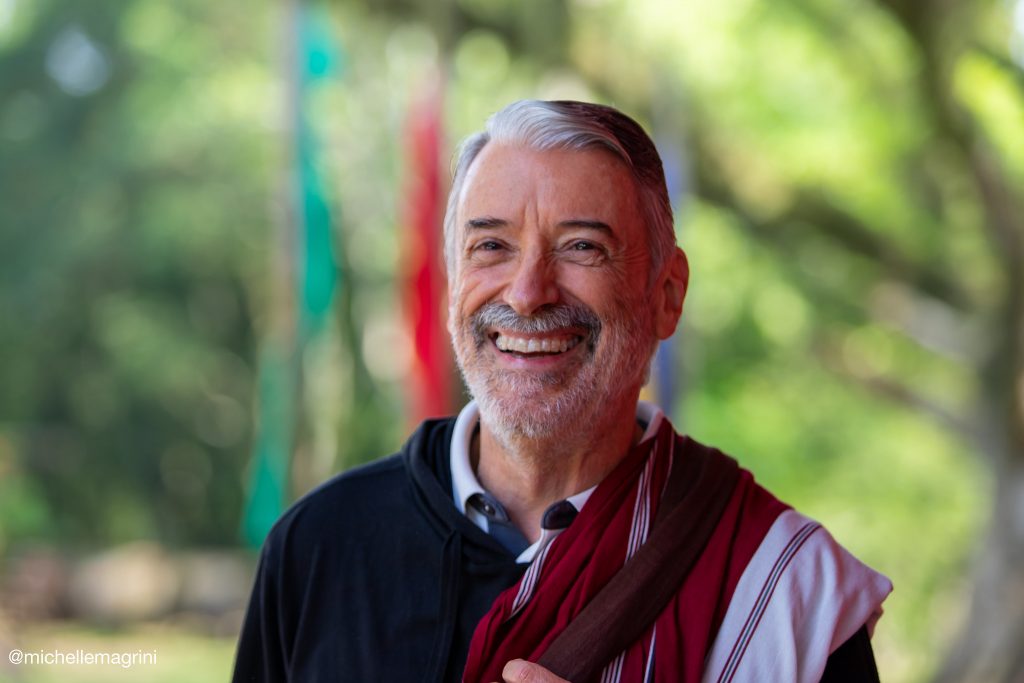
O professor budista Lama Padma Samten tem ajudado inúmeras pessoas em suas vidas diárias e relacionamentos, com ensinamentos que dialogam com as mais diversas áreas do conhecimento. Físico, com bacharelado e mestrado pela Universidade Federal do Rio Grande do Sul (UFRGS), Alfredo Aveline foi professor de física de 1969 a 1984. Durante esse período, dedicou-se especialmente a examinar a física quântica, teoria na qual encontrou afinidade com o pensamento budista. No início dos anos 1980, intensificou seu interesse pelo budismo e, em 1986, fundou o Centro de Estudos Budistas Bodisatva (CEBB). Em 1993, foi aceito como discípulo por Chagdud Tulku Rinpoche e, em 1996, foi ordenado lama, título que significa líder, sacerdote e professor.

September 10th and 11th & October 25th to 28th
13 a 15 de Setembro
27 de Setembro a 05 de Outubro
October 9th to 18th
19 e 25 de Outubro

The Bodisatva Center for Buddhist Studies (CEBB) is a Brazilian Buddhist organization focused on the study and practice of Buddhism. It was founded by Lama Padma Samten, a Brazilian physicist and Buddhist teacher, who is a disciple of Chagdud Tulku Rinpoche, a master of the Tibetan Buddhist Nyingma tradition.
CEBB's approach combines traditional Buddhist teachings with a modern perspective, making it accessible to a contemporary audience. It aims to offer a path for spiritual development and personal transformation based on Buddhist principles, emphasizing compassion, wisdom, and mindfulness.
Here's a brief overview of how CEBB works

Present in all regions of Brazil, run by the sangha through dialogue circles and sustained by the generosity of those who feel benefited, for 28 years we have seen a small room in the city of Porto Alegre multiply into around 10 rural communities and more than 35 urban centres. Check it out below:
Rural villages
The CEBB Caminho do Meio village is located in Viamão, Rio Grande do Sul, the southernmost state in Brazil. It was founded in 1997 as a result of the maturity of the sangha's activities in CEBB Porto Alegre.

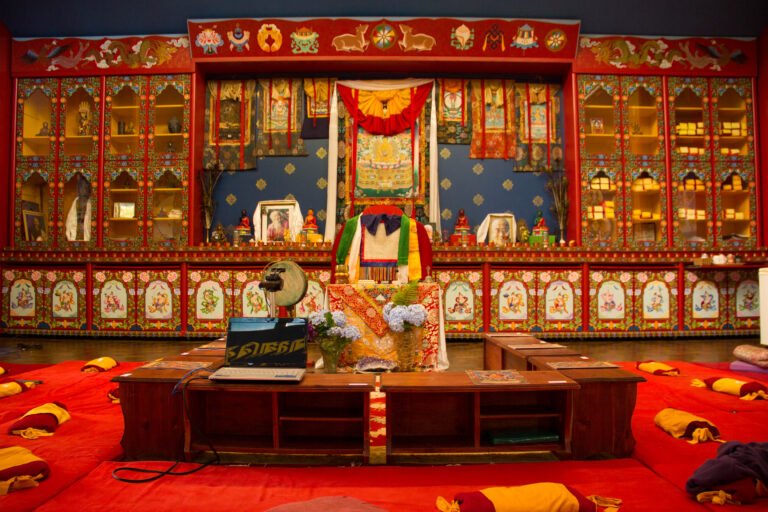
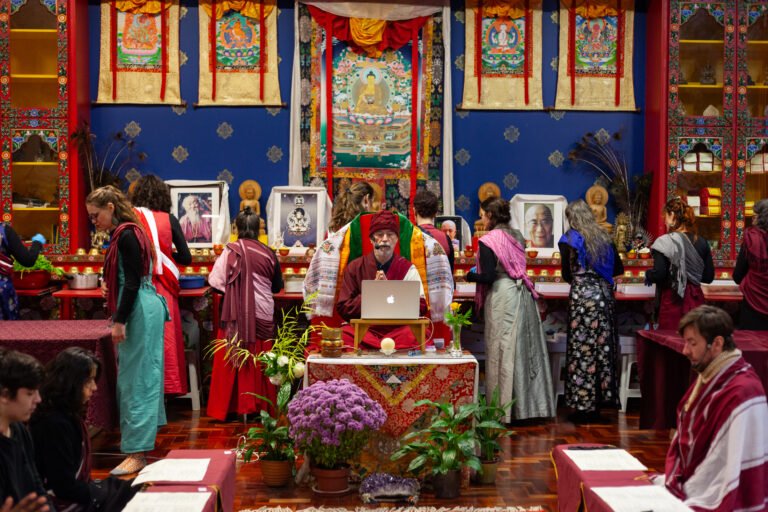

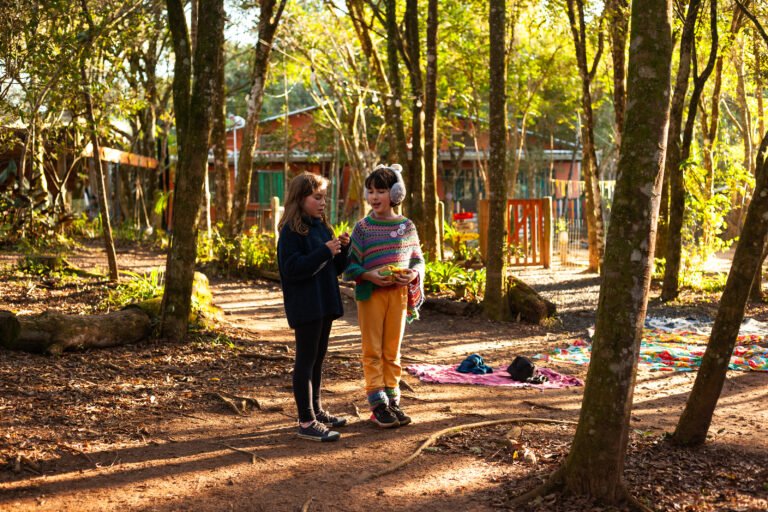


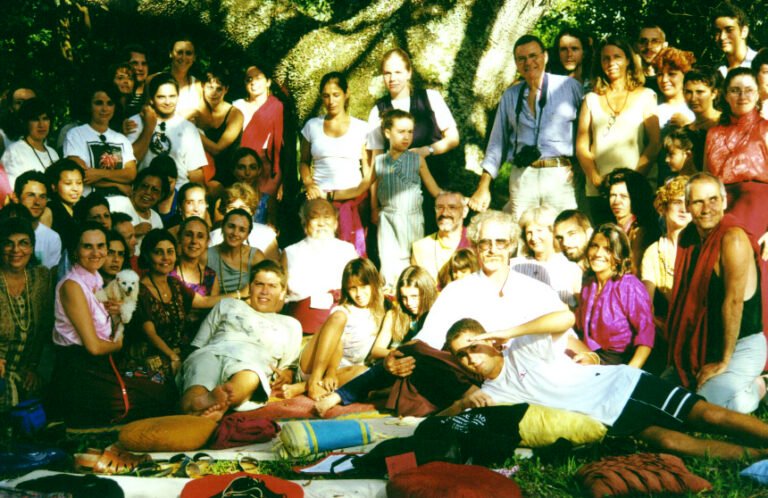





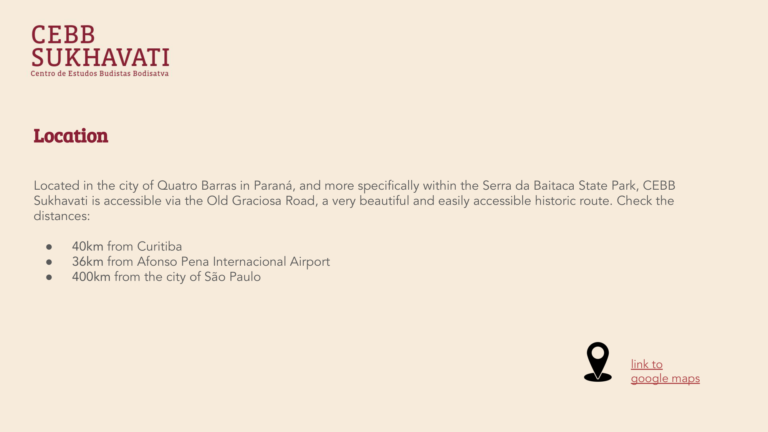
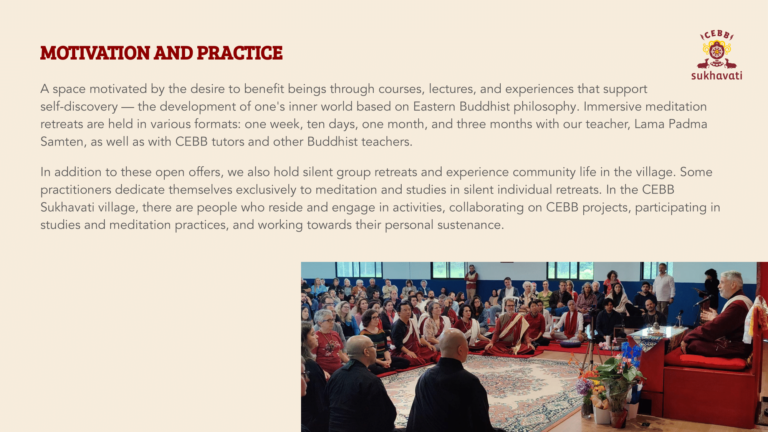
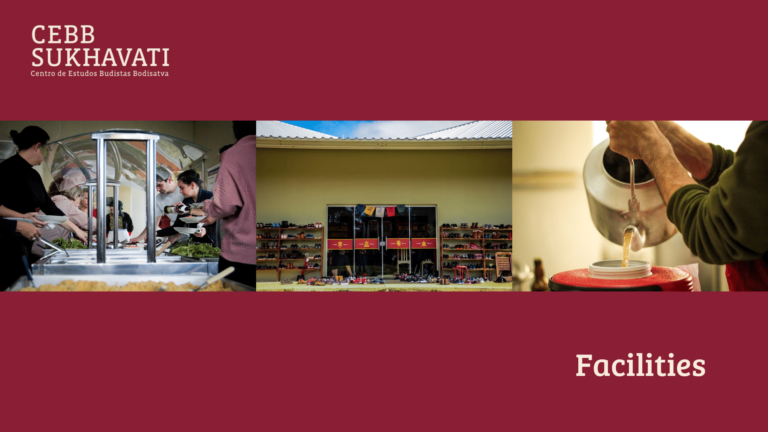
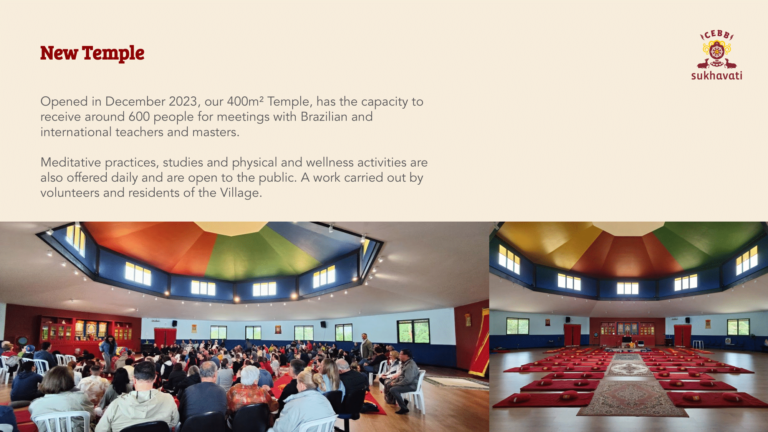
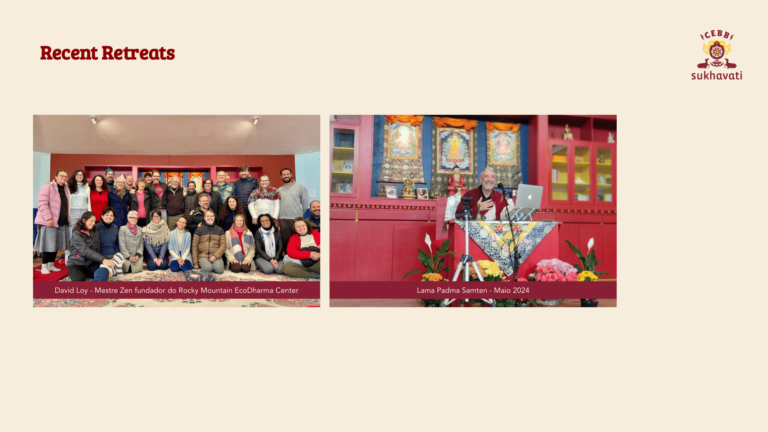
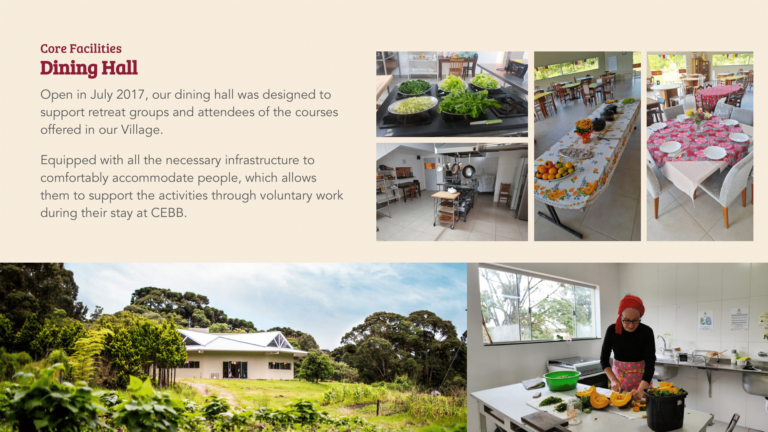
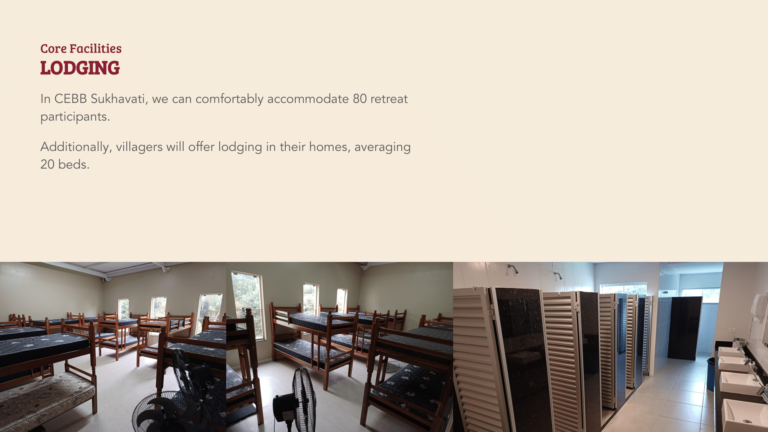
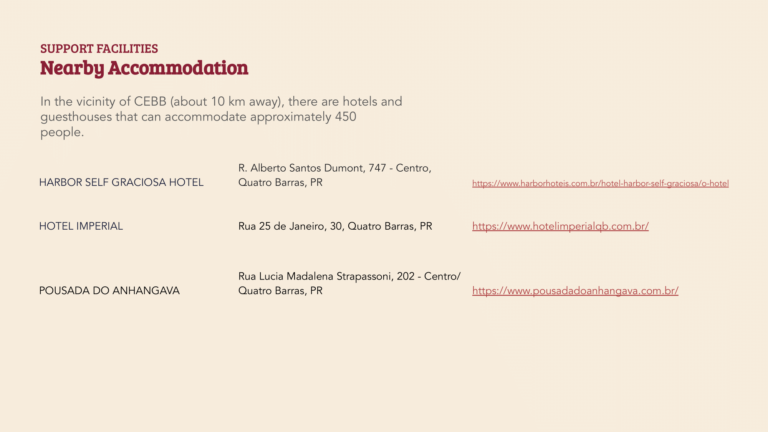
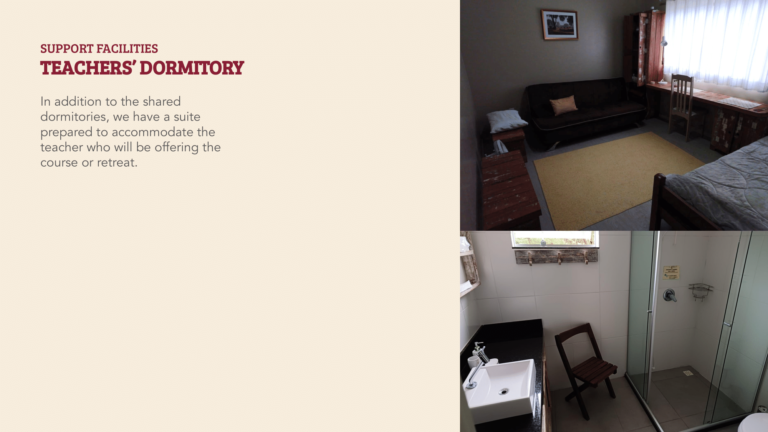

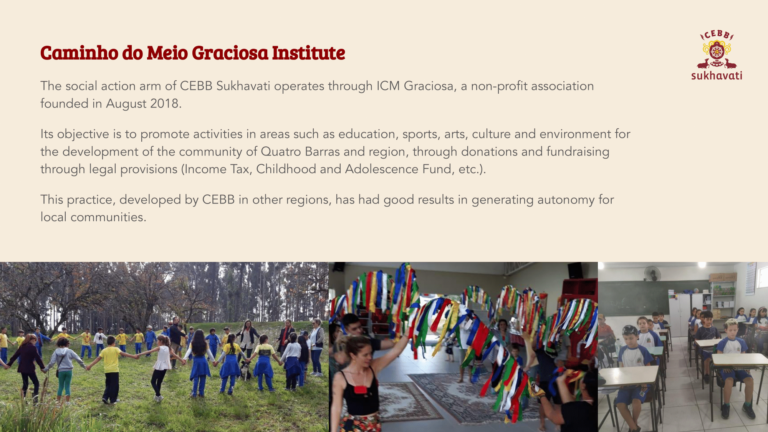

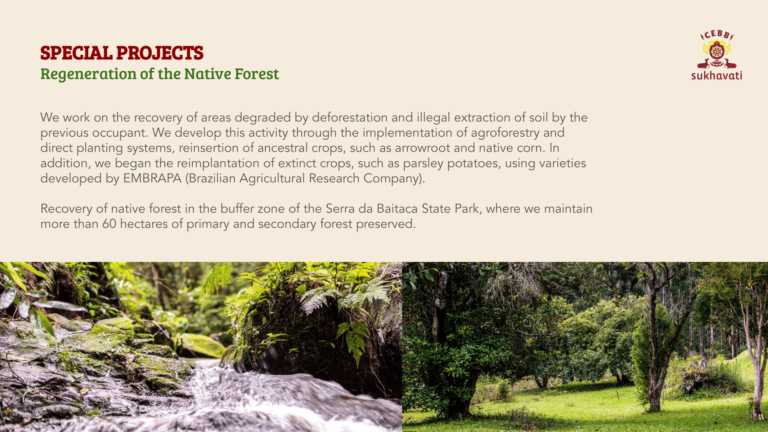
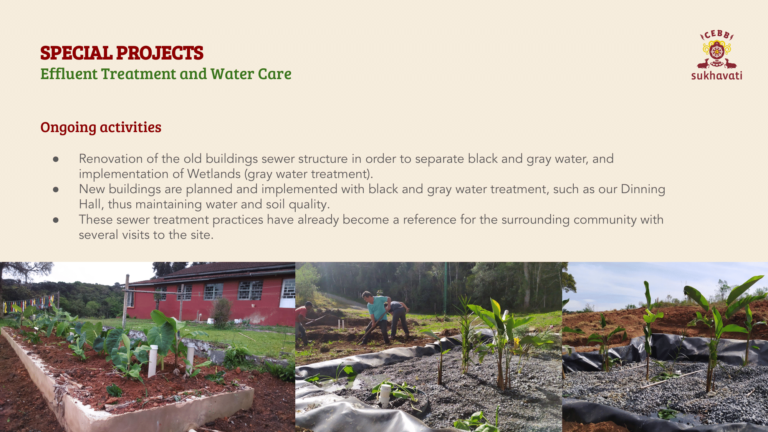
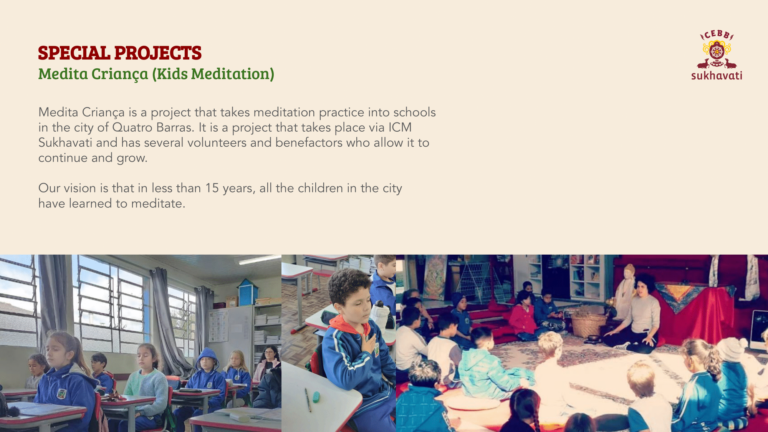
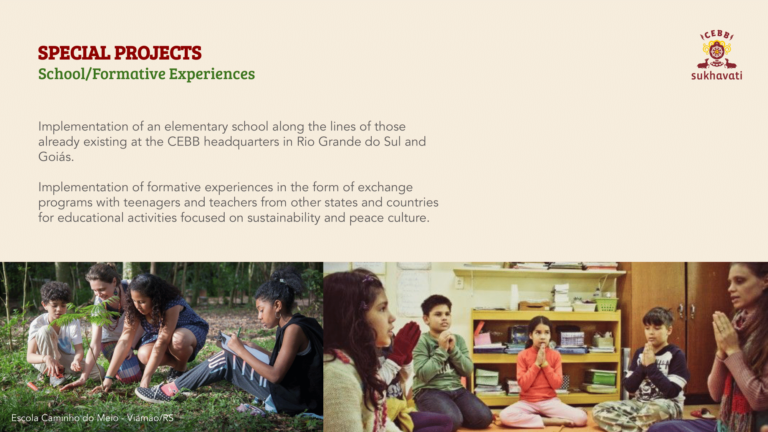
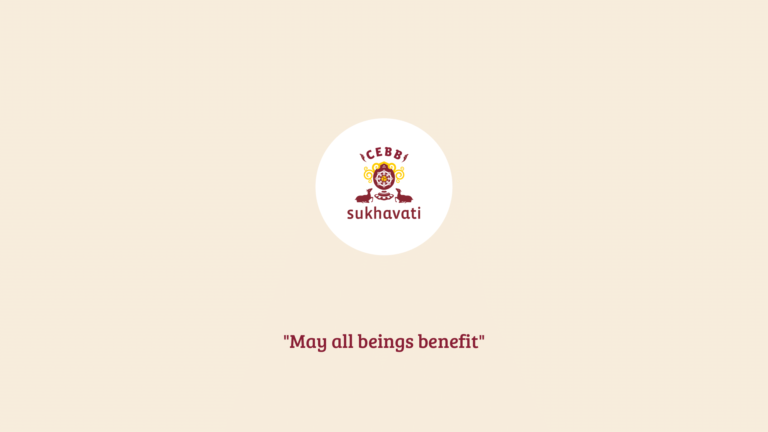

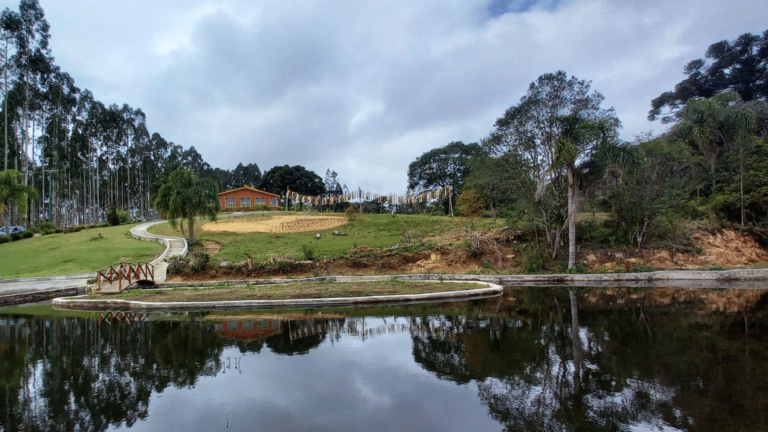
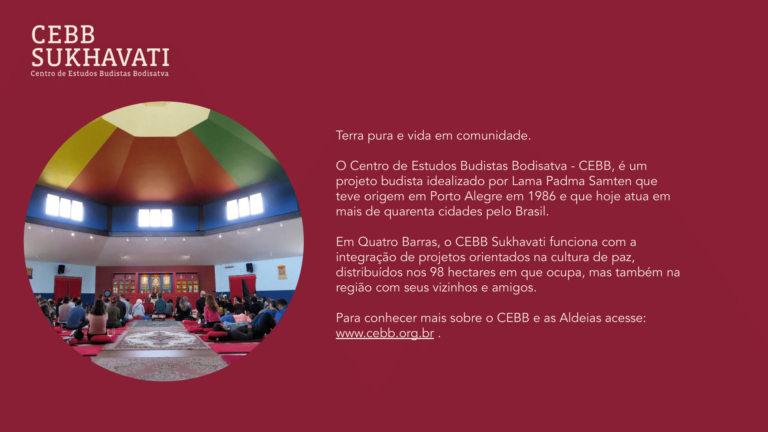


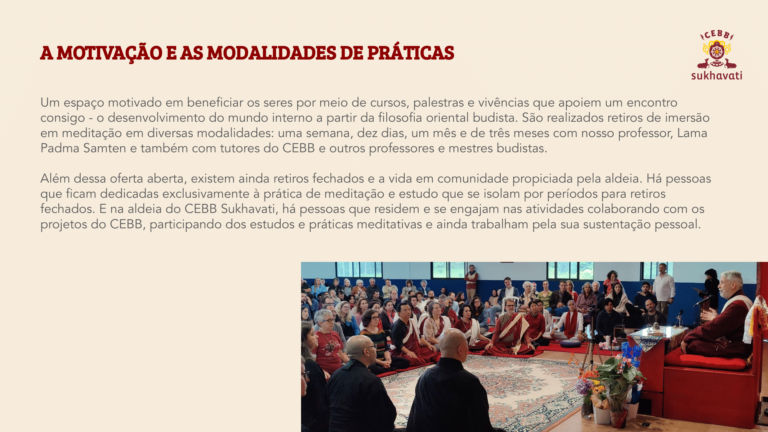
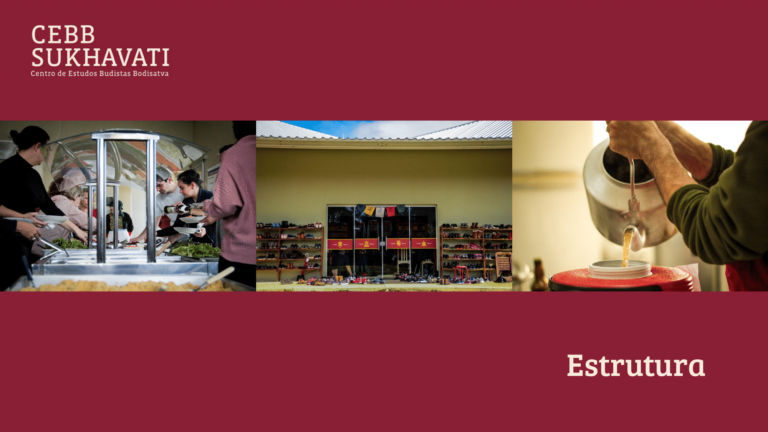

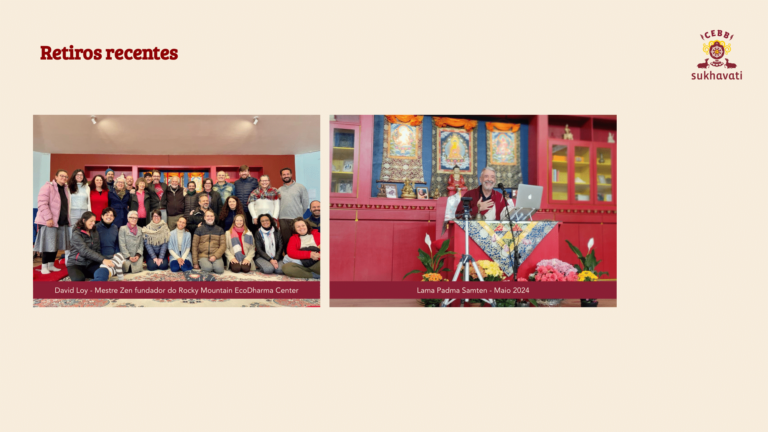
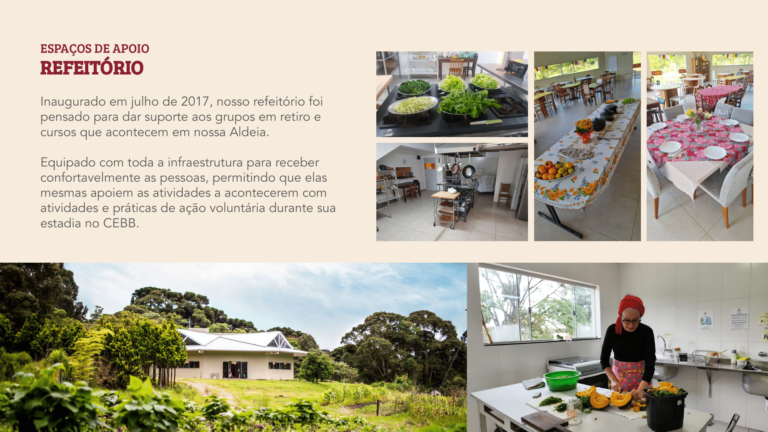
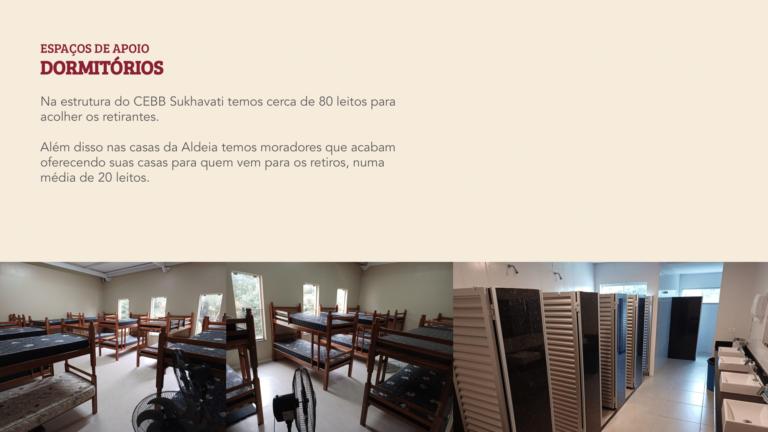
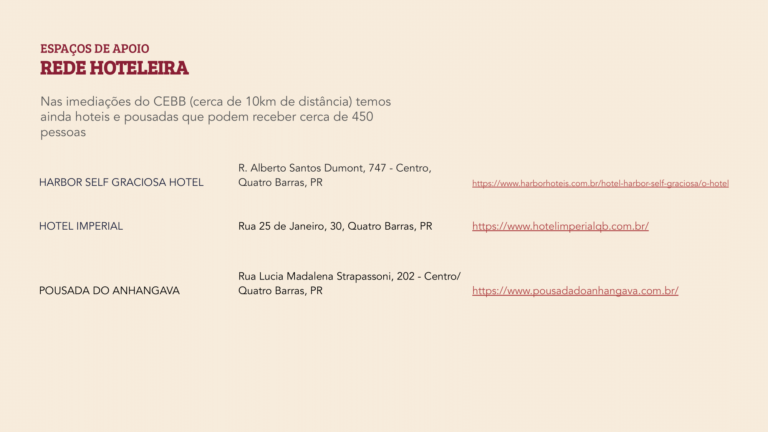

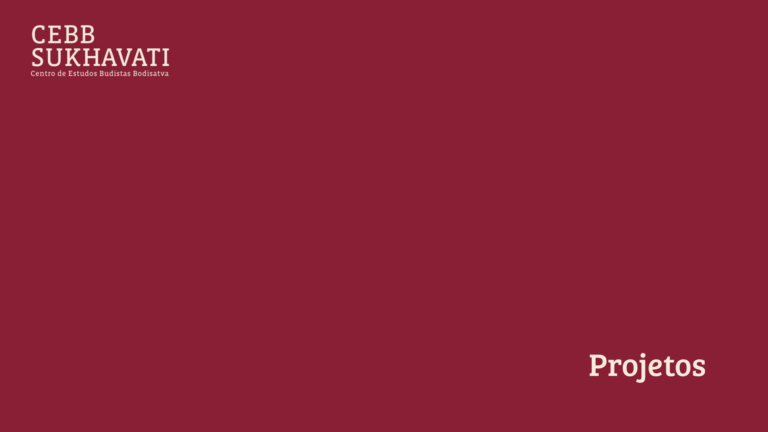
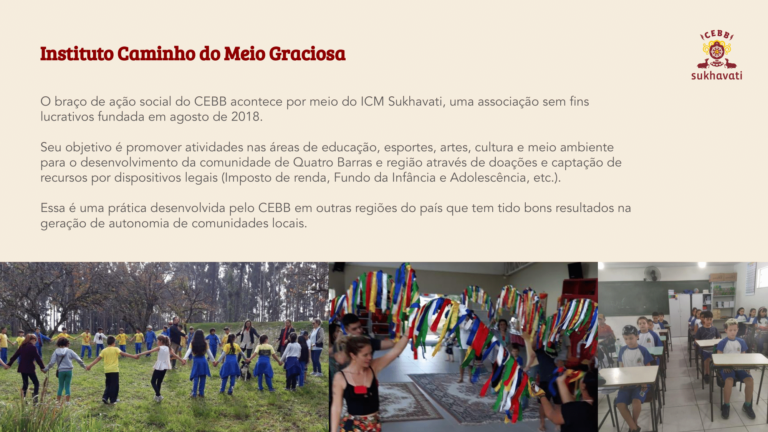
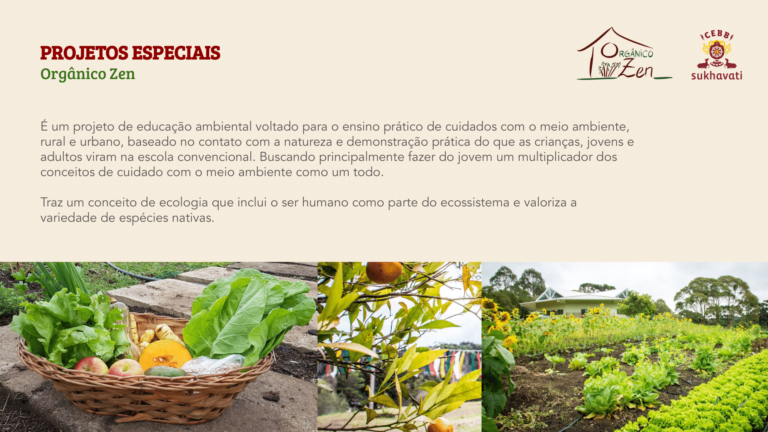
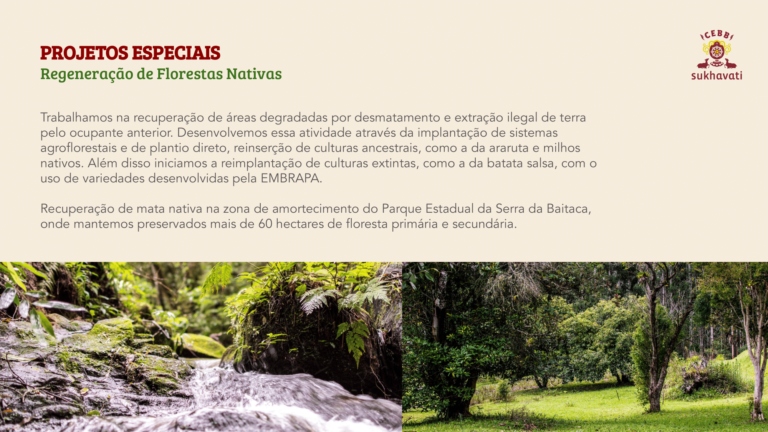
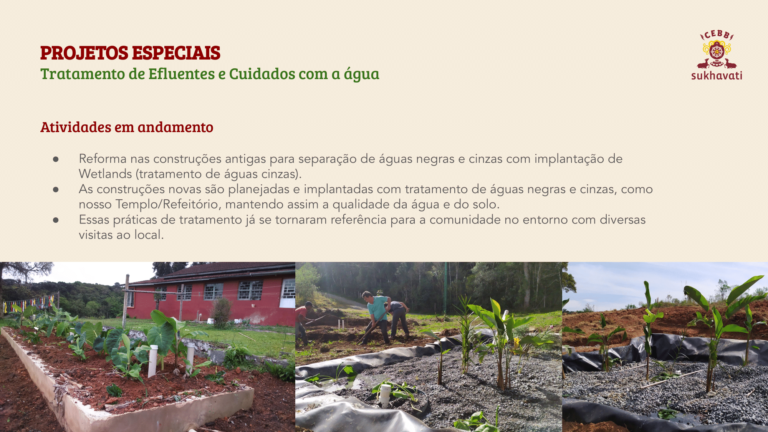
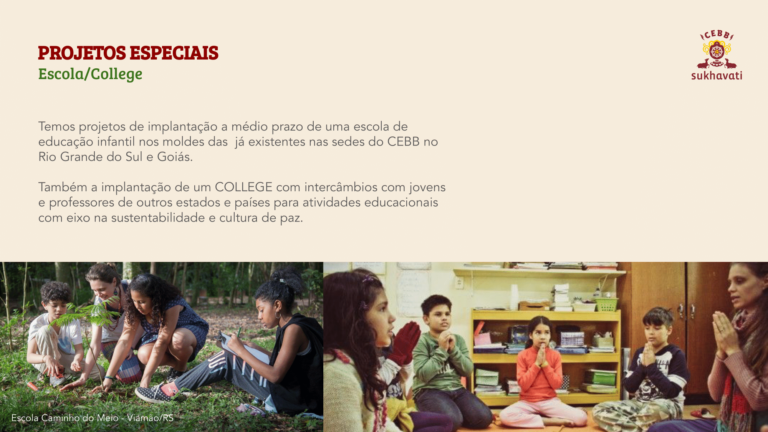
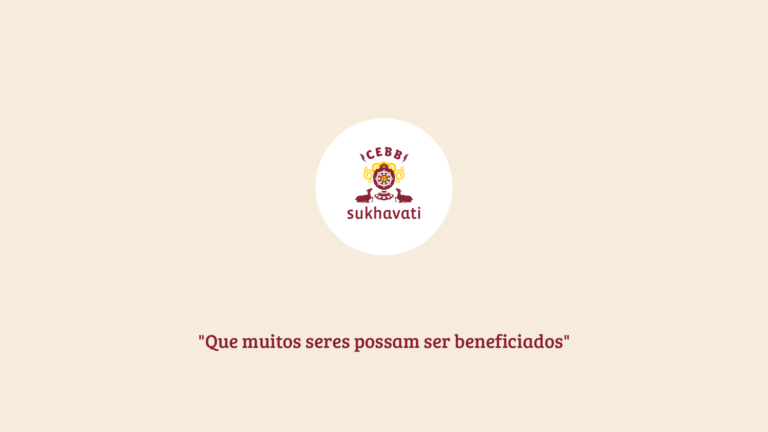
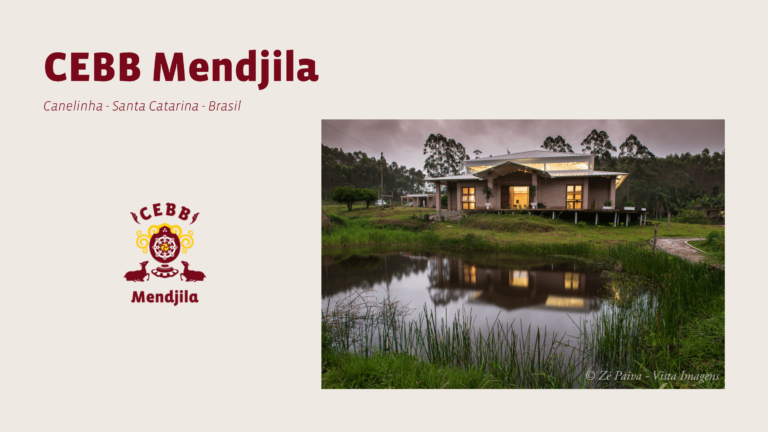
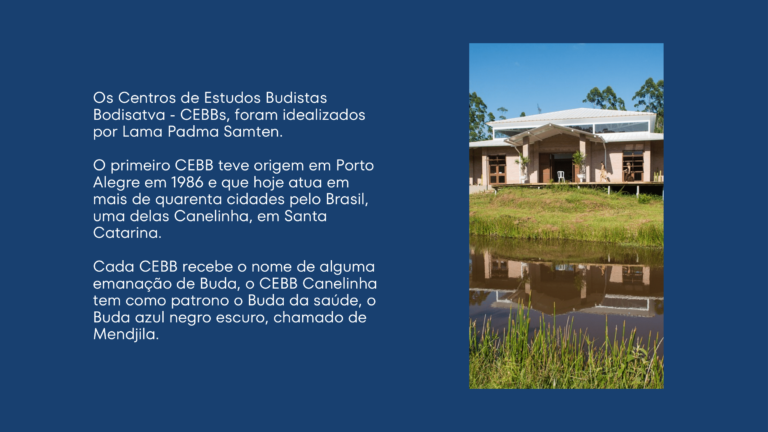
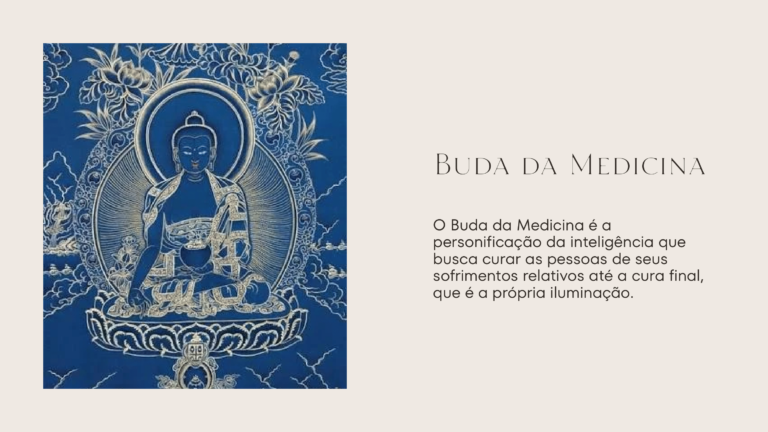
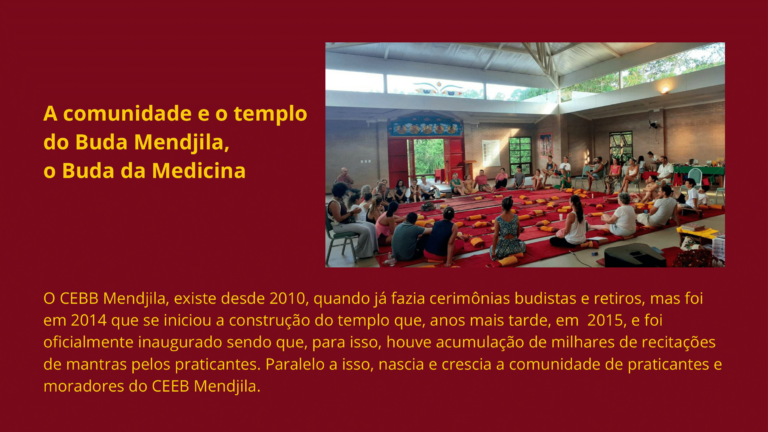
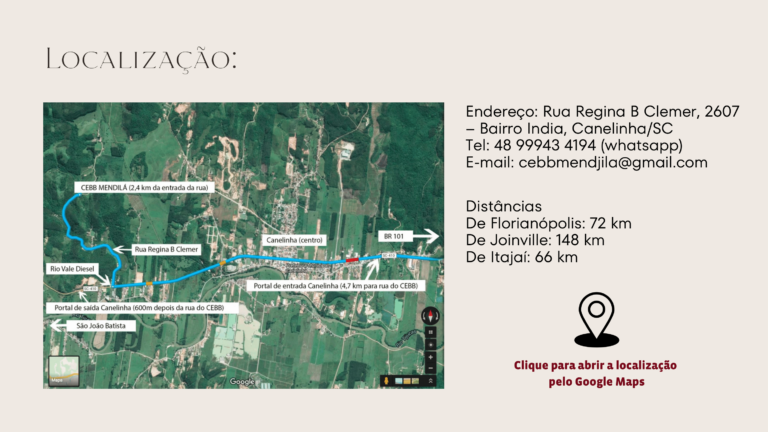
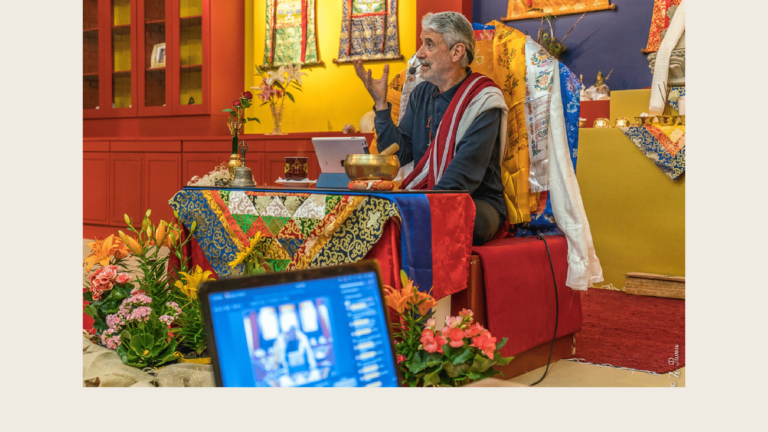
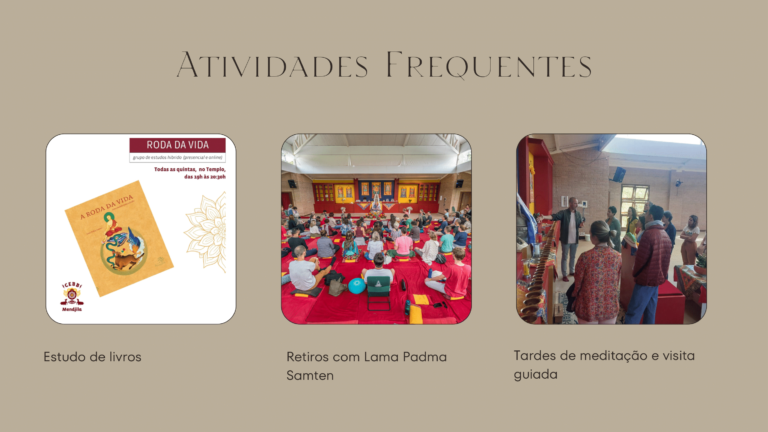
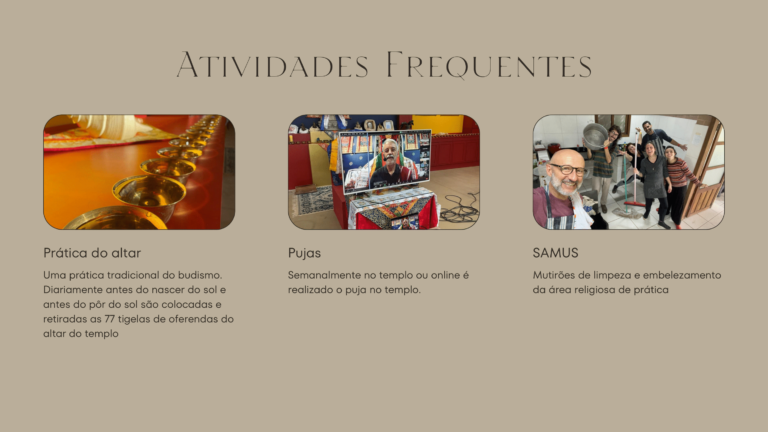
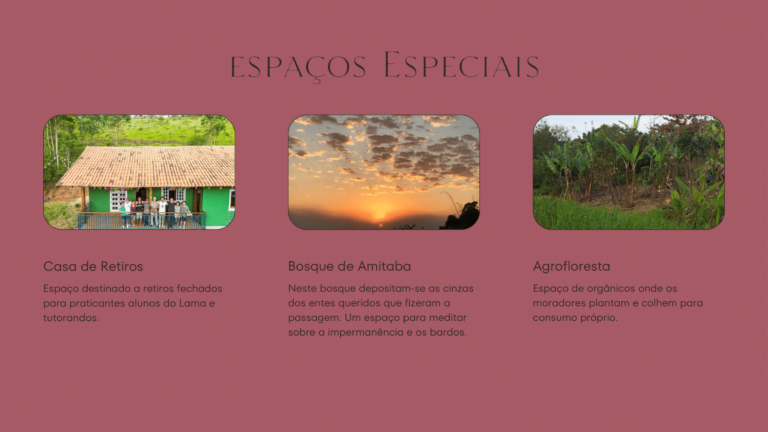

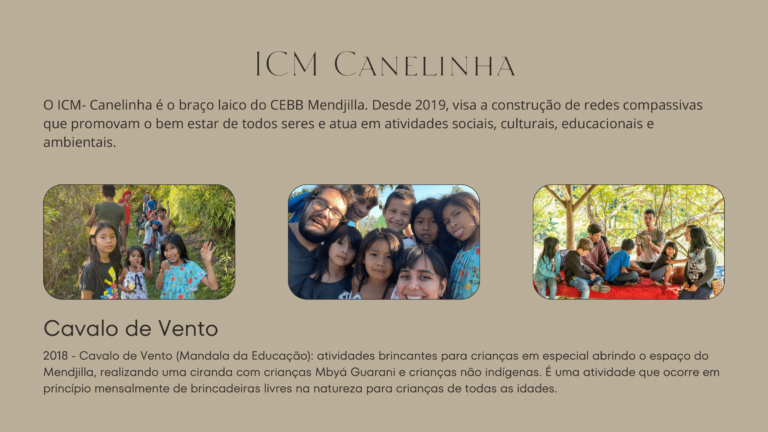
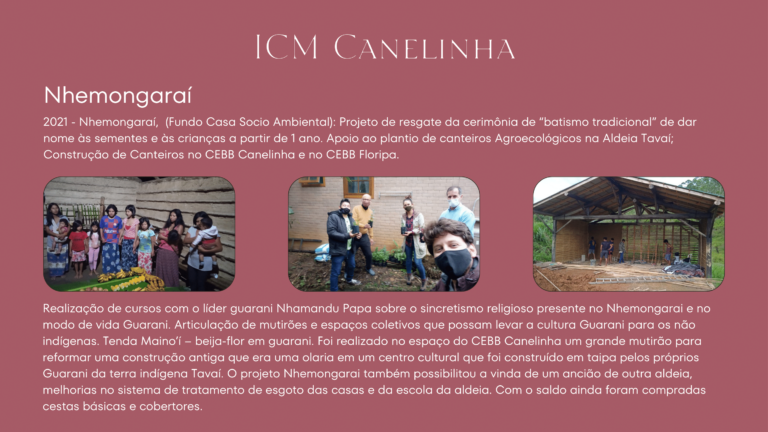
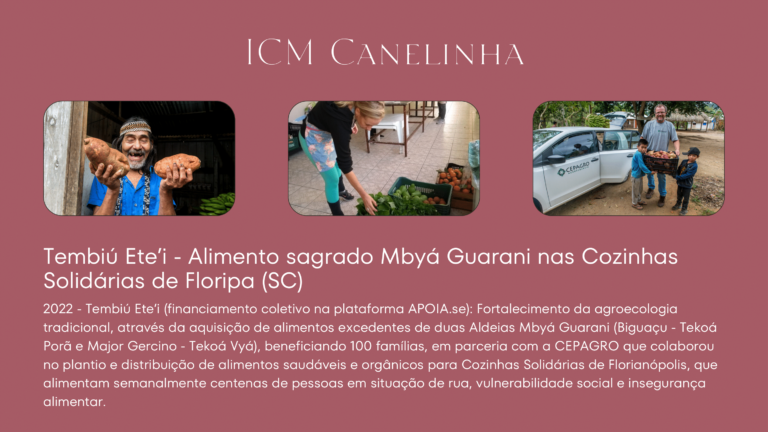





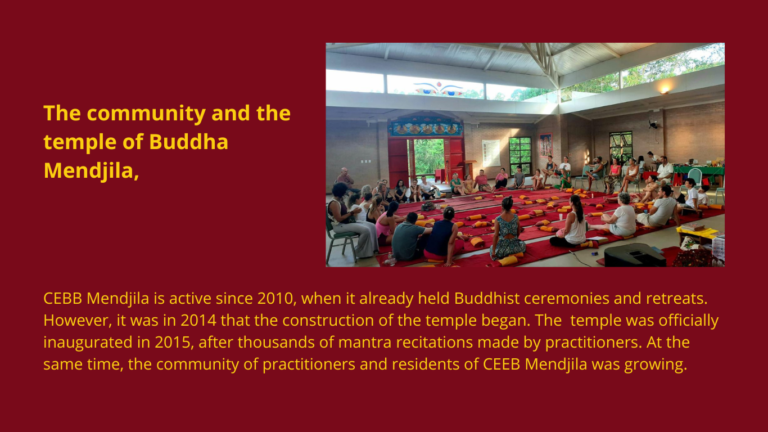









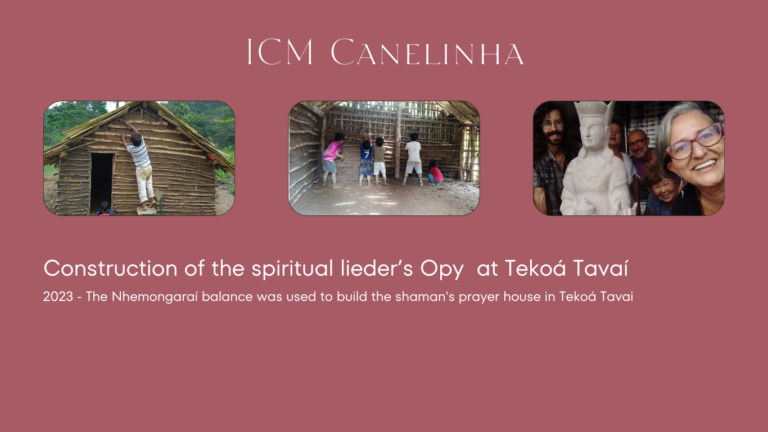

CEBB Akanishta's special vocation is to support the practice of people who seek to focus on deepening the Dharma through the different retreat modalities led by Lama Padma Samten.


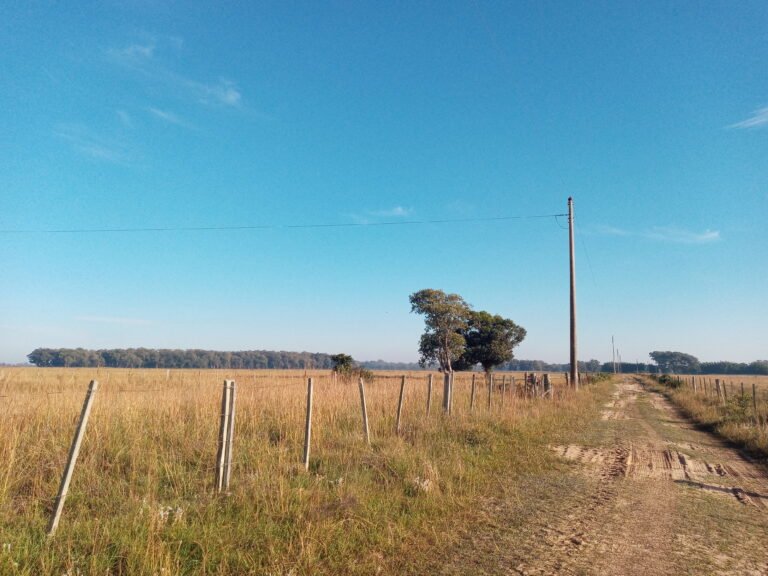

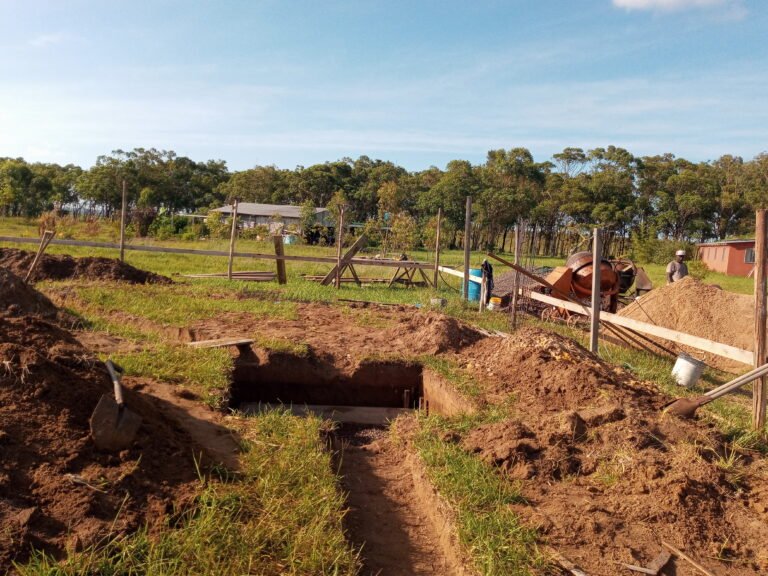
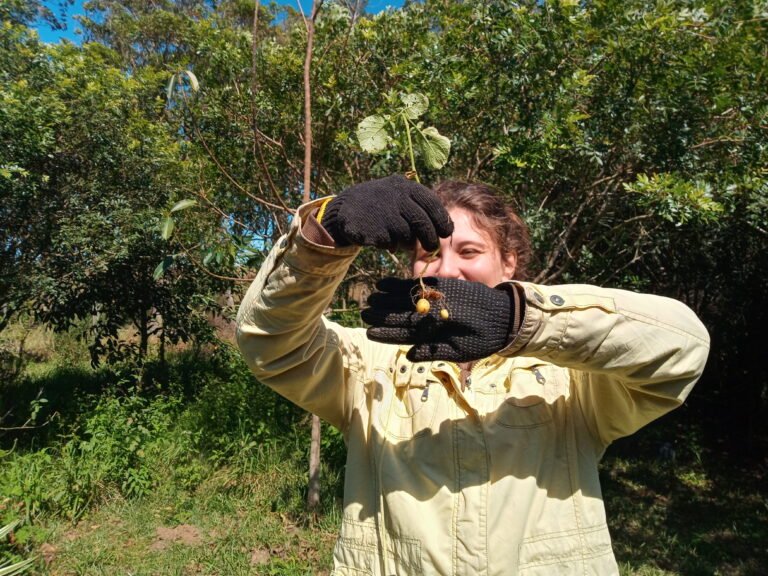
Temple
Com o crescente interesse da sanga em aprofundar a prática a aspiração por um templo com capacidade de acolher mais pessoas começou a tomar forma. Hoje em construção, o templo terá a capacidade de receber mais de 100 praticantes em retiro.
Retreats
Since 2019, Lama Padma Samten has been offering two annual retreats - summer and winter - aimed at deepening the practice of meditation. The silent meditation practices and pujas, which begin at 5:30 am and continue until 9:30 pm, are maintained uninterruptedly throughout the year by the practitioners who stay at Akanishta on long retreat. Food, caring for the facilities and the horticulture are managed by the practitioners themselves, as part of their practice, with the support of the center's resident tutor and coordinator.
Residents
In the center there is also a residential area that welcomes practitioners who share the same dream of building a pure land and deepening their practice. There are currently eight houses. Difficult to access and far from essential services, Akanishta has a different profile from CEBB villages, which are better able to accommodate families and those who need to travel around the cities.
CEBB Jetavana is an area dedicated entirely to long meditation retreats. It came about as a result of the maturing of the Sangha and the aspirations of Lama Padma Samten, and took shape in an exuberant area of preserved forest in one of the most beautiful places in Brazil: the Josafaz Canyon, located in the Serra Geral region, on the border between the states of Rio Grande do Sul and Santa Catarina.
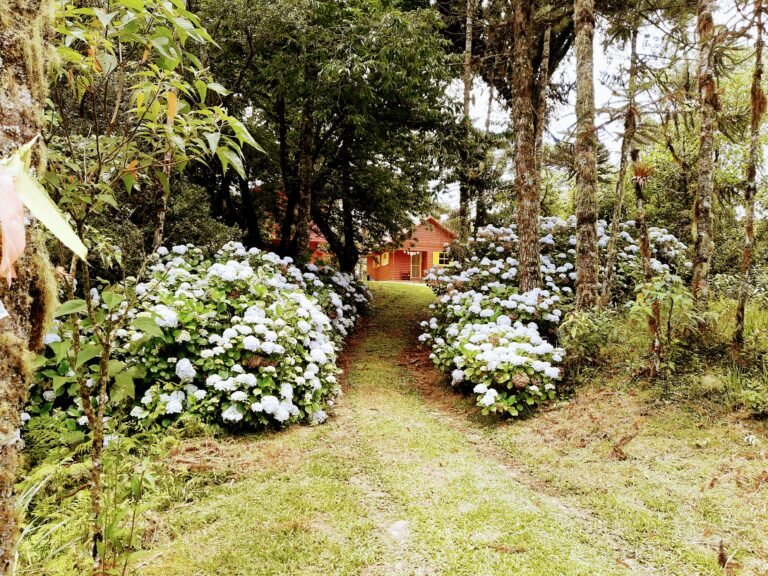

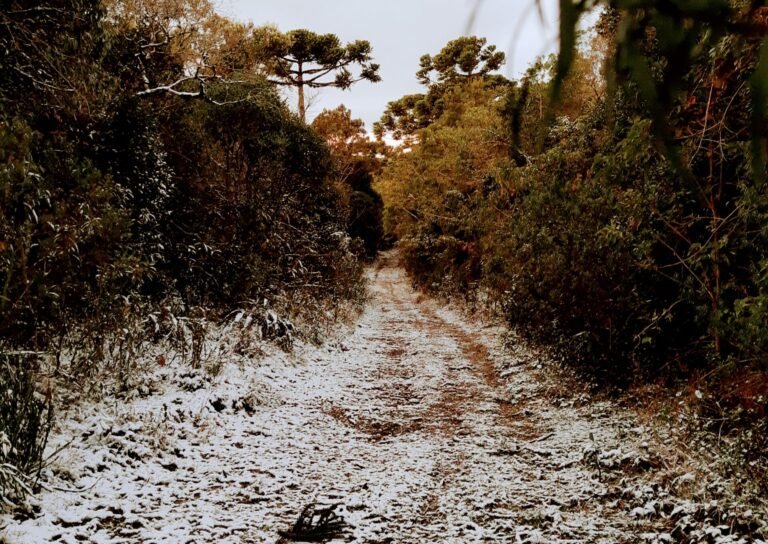
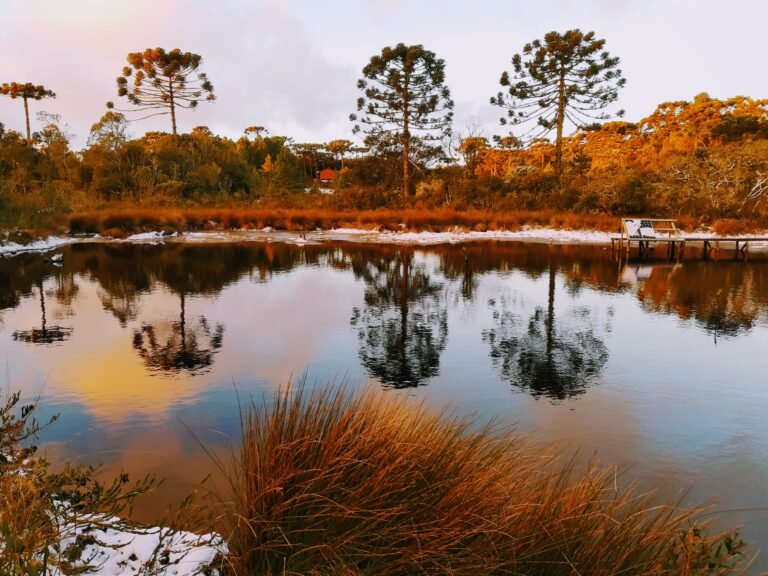
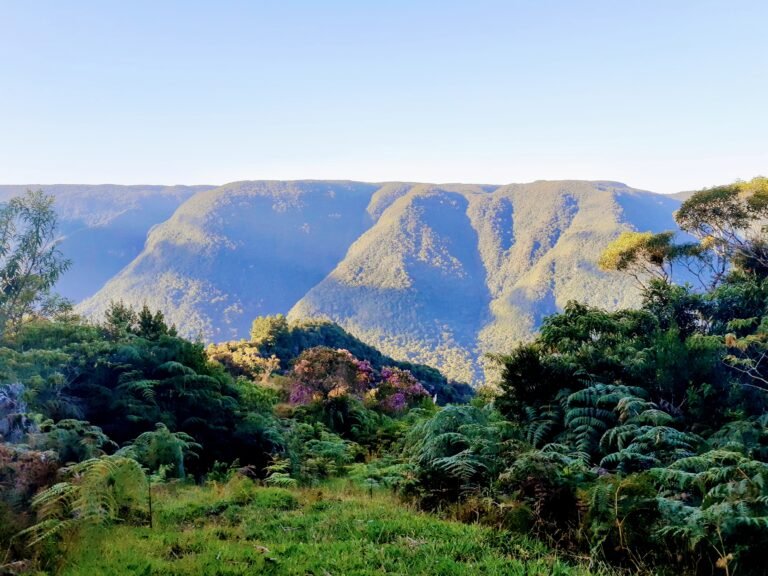
Imersa em uma área de 181 hectares de preservação ambiental, distante das cidades e do movimento urbano, the connection with the natural environment happens spontaneously, encouraging isolation and the practice of simplicity.
The physical structure of Cebb Jetavana includes a meditation room with a main altar and a support house equipped with a kitchen, bathrooms, laundry, pantry and individual rooms for solitary retreats.
Urban centers
Rural villages
The CEBB Dewachen village is located in Jarinu - São Paulo, the most industrialized state in Brazil. It originated in 2021, with the initiative and cooperation of the sangha of CEBBs from the interior and the capital, as a result of the maturing of their activities since the 1990s and early 2000s respectively.




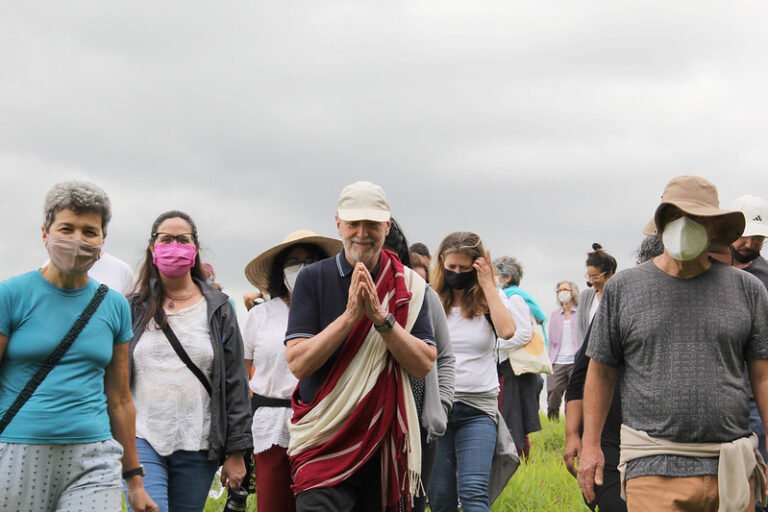
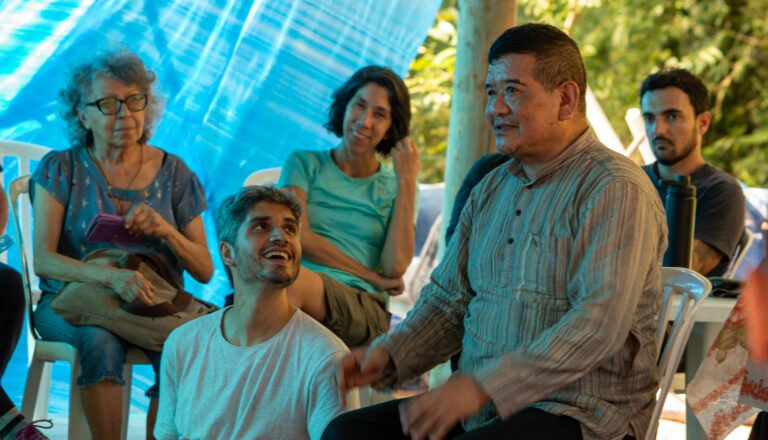
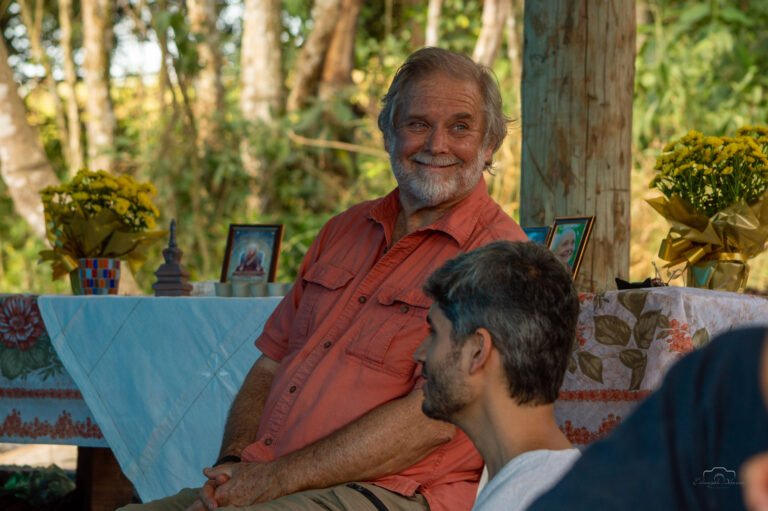
It is a fairly young village, located in an area known as the “Valley of Silence”, measuring 24.2 hectares, 17 hectares of which are preserved forest. Numerous species of birds, some non-human primates and deer have already been observed there.
At the moment, the village is in its structuring phase, with a resident-practitioner, a sheepdog and some chickens, as well as native species. It has a support house with a kitchen, a practice room, an artesian well, a power station, cable internet and mapping of the temple and support units for practitioners.
Currently, the activities of the CEBB Dewachen village are organized along the following general lines: Silent Meditation Practices, Participatory Management Talks and "Mutirões" (work groups).
The “Day of Silence in the village” is a Buddhist meditation practice, open to everyone, offered by the sangha under the guidance of Lama Padma Samten, which has been held on the third Saturday of every month since June 2023. The practice consists of getting together with people from different places and, through silent meditation, deepening contact with the inner world. On that day, we go for a walk in the woods, which we call a “forest bath”. More recently, we've started meditating in the forest itself.
Conversation circles are the participatory management method used in all CEBBs. People from the project take part in them and, after a practice of reading or silence, proposals, data, reports are presented, recommendations are made and decisions are taken, above all about infrastructure and how we organize ourselves among ourselves and in relation to our surroundings. Specific studies by the focal points, documents, budgets and contracting services are some of the recurring topics at the meetings.
Strategically scheduled on meeting days, they are ecological and social initiatives and help us to get to know each other better as agents of protection and innovation. Bio-construction work groups increase our familiarity with ancient techniques that have a low environmental impact, strengthen our bonds and sensory perceptions, and substantially improve our relationship with the land. Planting seedlings for reforestation, on the other hand, is related to the objective need to take care of the water in the spring and the stream.
In addition to these fronts, we have undertaken a formal educational initiative, with the pilot project “Meditating at School”. We participated with artistic presentations in a City Hall event to promote women's entrepreneurship, called FEMJA - Jarinu Women Entrepreneurs Market and we offer Yoga and Meditation classes for health center employees and state school students in the Yoga Week, in partnership with the Jarinu Department of Culture, in 2023.
In its short life, the village has already been visited by Roshi David Loy, in addition to our teacher Lama Padma Samten. Their presence encourages us and lights up our steps. We hope that our larger practice room, which is already under construction, will soon be ready for us to gather in Sangha to learn from our admirable teachers in retreat. To this end, we are going to expand the dining hall to welcome visitors during activity periods!
CEBB Abhirati is the result of a dream of more than 10 years by the sanghas of Rio de Janeiro and Minas Gerais, and is currently in its full construction phase.
In 2019, with the blessings of Lama Padma Samten, a 150-hectare farm was acquired, with eighty percent preserved vegetation and many springs.
In this area, a house has already been built with accommodation and a kitchen to support the sangha's activities; a large lunchroom that will serve as a temporary room for retreats, courses and practices; a large industrial kitchen to cater for events; and accommodation for up to 100 people (under construction). It is also part of the dream to build a temple for up to 300 people, a house for closed retreats and other projects, such as a crafts house, a school, a health center, etc.
The main focus of the Abhirati Village dream is Buddhist studies and retreats for teaching and meditation. There will also be a space for closed retreats for those who wish to deepen their practices for longer periods in isolation.
The group of residents in the Village are building their homes with designs that preserve nature, as indicated by the entire CEBB. The residents' area has 75 shelters, with several houses already completed and others under construction, and in a second stage around 30 additional shelters to receive more people from the sangha.
All the actions and practices are under the guidance of Lama Padma Samten
Urban centers
Rural villages
Created in 2012 by the sangha, together with Lama Padma Samten, the CEBB Alto Paraíso village was designed to be a place of residence that enables simple living and an environment conducive to the study and practice of Buddhist teachings. It is located in an area of 44 hectares next to the Chapada dos Veadeiros National Park, one of the most beautiful and important ecosystems in Brazil.
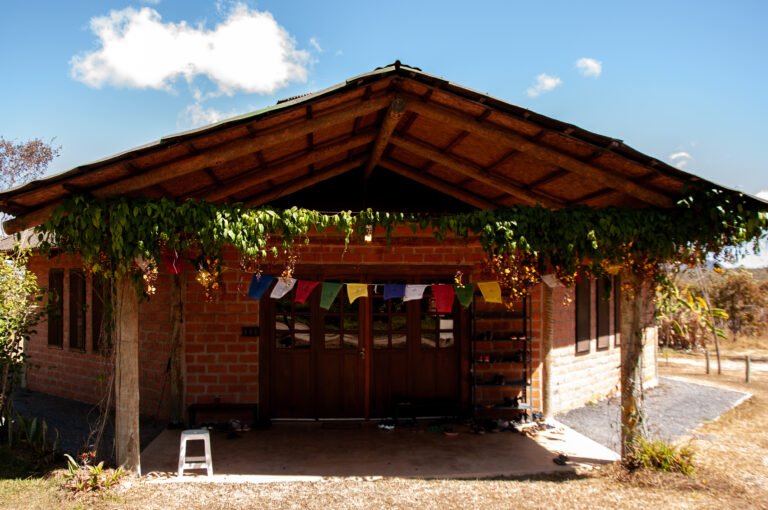
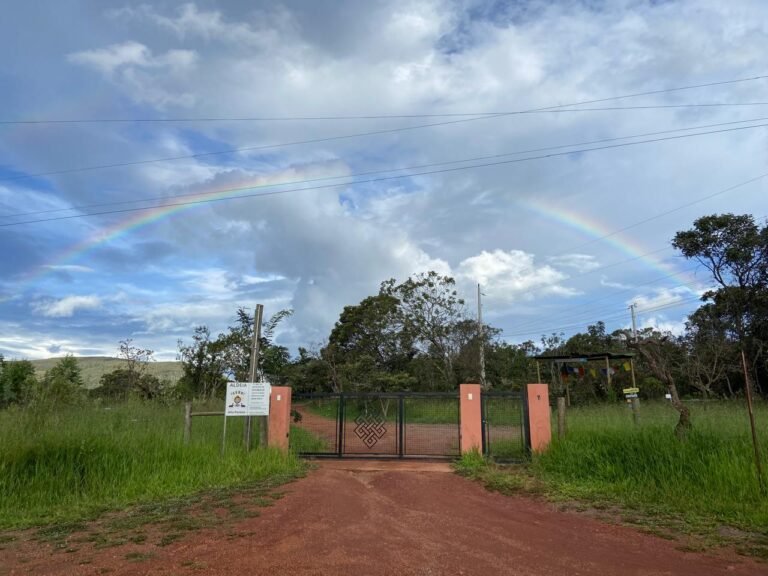


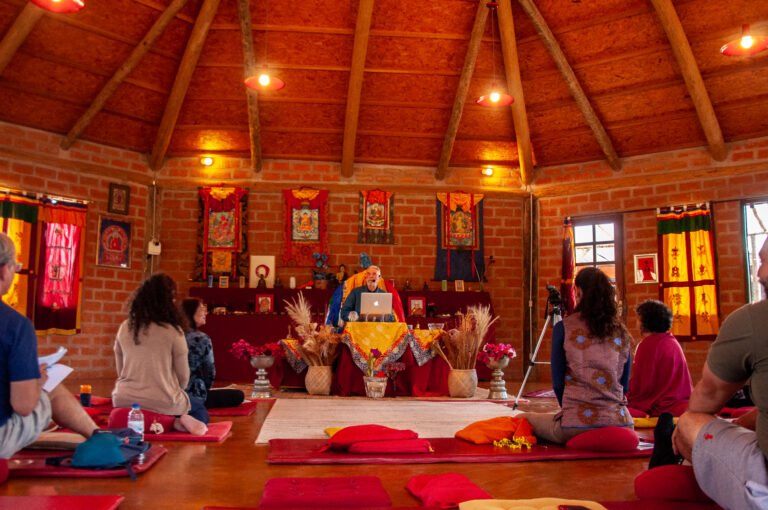
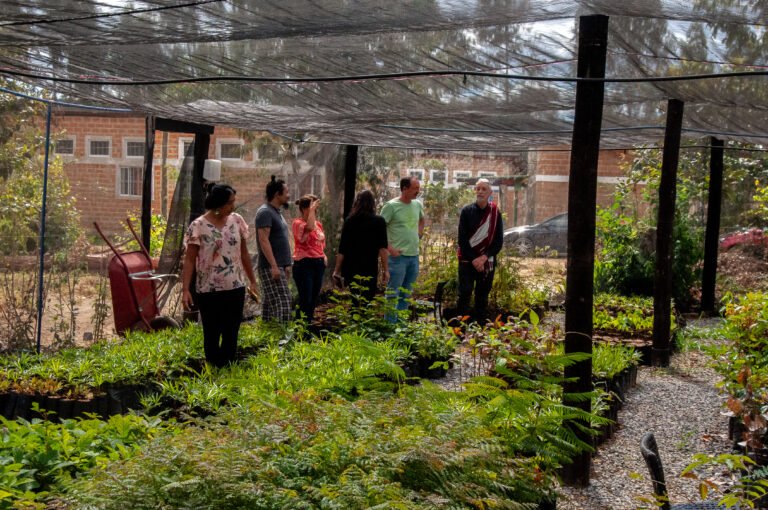
The village currently has 50 lands, of which 29 already have houses built, housing around 30 people. The village's infrastructure is divided into two main areas: the temple area, which includes the temple itself, two retreat houses and a support house; and the residents' area, where the houses and the entire structure of the former Vila Verde School, some agroforestry spaces and the Viveiro Escola nursery are located.
Studies and meditation practices are offered weekly at the temple. Twice a year, the village is delighted to welcome Lama Padma Samten, who leads a 10-day retreat. In addition to the retreat with the Lama, there are also short retreats led by CEBB tutors.
The retreat houses located in the temple area welcome practitioners who wish to spend longer periods of time dedicated to deepening their meditation practices following the Lama's teachings.
In addition to activities linked to the practice and study of Buddhism, CEBB Alto Paraíso is also home to the Instituto Caminho do Meio Alto Paraíso (ICMAP), which aims to bring benefits to the city and region. Among ICMAP's main actions are:
CEPEAS is a center dedicated to the research and practice of syntropic agriculture, an agricultural method that seeks to mimic natural processes in order to create sustainable and productive agricultural systems. CEPEAS offers periodic courses in syntropic agriculture and maintains some areas of agroforestry within the village, serving as a living model of regenerative agricultural practices.
The Semente Amarela (Yellow Seed) project was set up to create a network for young people, children and babies who are in a fragile situation at a time when their family is changing. It provides support and attention aimed at teenage pregnancy and seeks to provide information and raise awareness on issues related to family planning, healthy and conscious pregnancy, care for the baby and child during early childhood and, above all, the bond between young people and this new life that is on the way.
Through hikes in the middle of the vegetation, baths in the waters of the Cerrado, among other experiences, it provides children and young people from Alto Paraíso and the region with critical observation of nature, as well as reflections on the relationship with our inner world and the biosphere around us. Since 2016, more than 1,000 children from the municipality's public and private schools have been brought closer to nature through visits to the Chapada dos Veadeiros National Park.
Installed within the village area, the Viveiro Escola has the capacity to house 20,000 seedlings. The nursery produces native species that are used to recover degraded areas of the cerrado. In addition, it offers environmental education for children and adults, teaching them about the importance of conservation and sustainable management of natural resources.
Urban centers
Rural villages
CEBB Darmata came about as a result of Lama Padma Samten's aspiration to establish a Dharma center focused on the practice of short and long retreats. The first rural CEBB founded outside Rio Grande do Sul, the Darmata is also an opportunity for practitioners from the north and northeast of Brazil to practice the Dharma and have the chance to participate in the structuring of a work and living place based on the practice of Buddhist teachings.
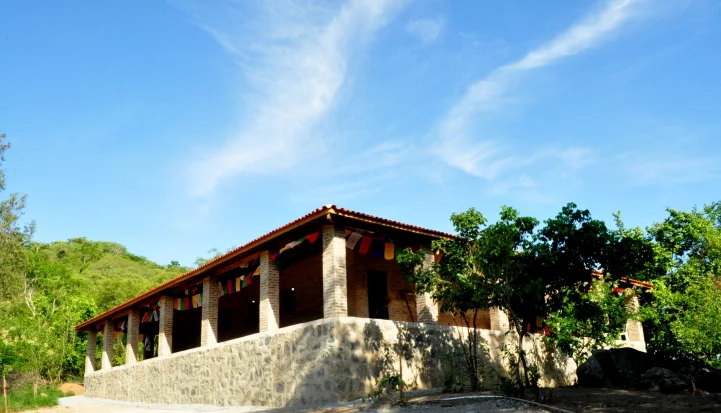
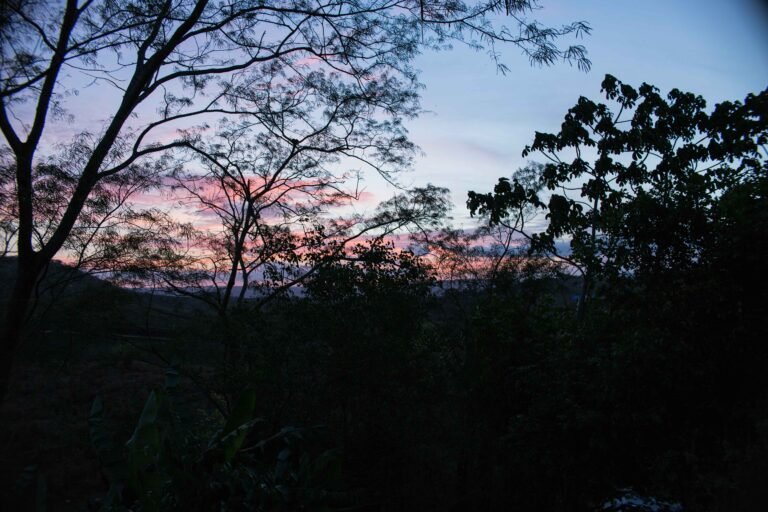
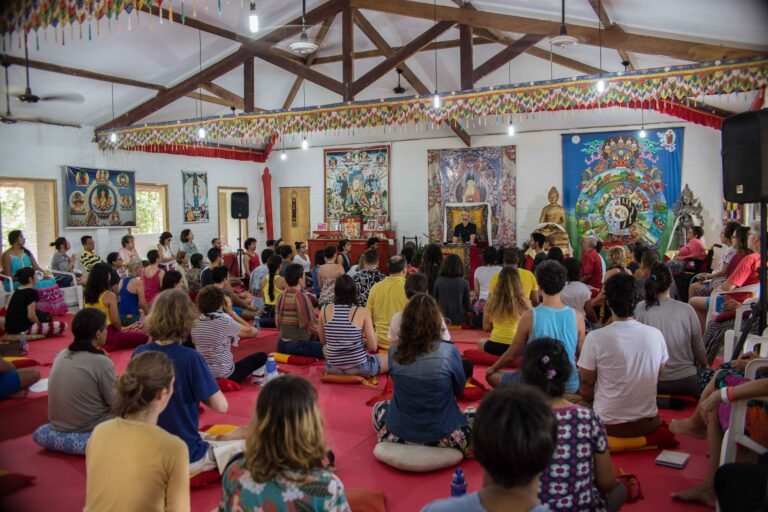
Founded in 2009 during a retreat on Prajnaparamita led by the Lama, CEBB Darmata has held various retreats and courses since then. In 2010, CEBB acquired 15 hectares and began building a temple for 120 people, which was completed in 2011, the same year that H.H. Sakya Trizin granted Guru Rinpoche's initiation in the newly inaugurated temple.
Darmata is located in the northern "Zona da Mata" of the state of Pernambuco, a region historically marked by sugar cane cultivation and therefore with strong traces of environmental degradation. Cattle pastures and extensive sugar cane plantations surround the CEBB area: 15 hectares of forest that has been protected to the same extent that it protects practitioners for the practice of silence and study.
During the course of its work, the NGO Ação Darmata, founded by students of Lama Samten, has promoted dialog with the local community in order to think about and promote the sustainable development of the region from a perspective of happiness and lucidity. Collective actions, such as planting more than 600 saplings together with the local community, marked this dialog. The NGO was discontinued, but its legacy still has an impact on the relationship with the local community.
Since the beginning of its activities, Darmata has sought to support the community of Timbaúba city. Strengthening family farming has been a theme of CEBB Darmata's dialog with farmers in the region.
Since 2016, Darmata, under the guidance of the tutor João Petry and with the support of OSSAM (Saint Mary Social Work), has been holding weekly meditation and relaxation meetings in Timbaúba. These activities provide the local community with an environment of welcome and well-being, promoting inner peace, mental health and the strengthening of community ties.
At Darmata, we have sought to strengthen and apply agroecological practices in our area, promoting harmonious integration between human beings and nature. With the support of resident Matheus Felipe, and his approach to Serta (Alternative Technology Service), we offer biannual workshops that include sustainable soil management techniques, agroecological cultivation, biodiversity preservation and regenerative practices. These meetings have been essential for raising ecological awareness and developing a more balanced and sustainable agriculture.
Over the years, Darmata has improved its structure to welcome practitioners on different retreat modalities, both short and long, offering all the necessary support for the practice of deep silence. With a welcoming and well-equipped environment, it guarantees the care and creation of appropriate spaces for meditation. Our structure seeks to provide comfort and tranquillity, allowing full immersion in introspection and contemplative practice.
The Darmata continues to support the Lama's aspirations and provide a space of refuge and welcome for practitioners seeking to deepen their contemplation of Buddhist teachings and the practice of meditation.
Our aspiration is to continue cultivating an environment where the wisdom of the Dharma can flourish, offering integral support so that each person can connect deeply with silence. Through our activities, we seek to generate lasting benefits that resonate within and beyond our community, contributing to everyone's well-being.
Located in the northeast of Brazil, CEBB Recôncavo is situated in the state of Bahia, a region of great historical and cultural importance, where the first Europeans arrived in the territory we know today as Brazil. Currently, the Dharma in Bahia, under the guidance of Lama Padma Samten, is practiced in two Buddhist spaces: a practice room in the capital, Salvador, and the rural CEBB Recôncavo center, in the city of Santo Amaro da Purificação, in the Recôncavo Baiano.



Santo Amaro is a historic city known for being the birthplace of samba and world-renowned artists Caetano Veloso and Maria Bethânia. It is also home to a Buddhist Temple that can accommodate around 500 people. This region is predominantly inhabited by people of African descent, including quilombola communities, and holds deep memories of the history of slavery in Brazil. This historical connection offers a unique opportunity to reflect on and work towards overcoming the causes and conditions of human suffering, anywhere in the world and at any time in history. In addition, the region is rich in vibrant culture and cuisine.
In this place of preserved and welcoming nature, founded on July 13, 2013, we have welcomed more than 13,000 people and several masters. There is a rich fauna with wild animals and magnificent flora with tropical flowers and exuberant centenary trees producing fruit such as jackfruit, mango, banana, avocado, jenipapo, lemon, cocoa and countless others as well as medicinal plants. There is a preservation area bordering a stream with many waterholes. It has grown. It has become noticeable, welcoming so many people.
With its 7.5 hectares, it is the second Cebb Village established in the northeast of Brazil. It currently has 20 houses built, known as individual lodgings or “shelters”. It also has 6 collective lodgings. It currently has the capacity to accommodate around 85 people, enjoying a nutritious and tasty ovolactovegetarian diet.
The infrastructure consists of the Temple, the Meditation House, the Study and Practice Room, and other facilities. It includes a kitchen and a cafeteria that are open during the meetings, as well as a good capacity for welcoming visitors during activity periods.
The CEBB Recôncavo village is dedicated to spiritual growth and Buddhist practice, offering a serene environment and ample resources for both the local community and visitors. Some of the activities and resources available include:
When we contemplate the CEBB Recôncavo Temple, the word that comes to mind is gratitude. We are witnessing the realization of a great dream, day after day, blessed by Lama Padma Samten, and we hope that many, many beings will benefit from this space. CEBB Recôncavo is an inspiring place that reconnects us with our inner temple, with our hearts. Entering this temple is something that touches us, a moving experience that awakens enchantment and tears of emotion. It's a place where the sangha strengthens itself and renews its vows, remaining steadfast in its practice!
Urban centers
Urban centers


The Ação Paramita (Paramita Action) is an online platform of buddhist education and content. It aims to reenchant reality by strengthening network action and promoting social self-organization.

Instituto Caminho do Meio (ICM) seeks to awaken and highlight the positive qualities naturally present in every human being, so that everyone can establish better relationships with themselves, with others, with society and with the biosphere.

Bodisatva is the first buddhist magazine in Brazil. Founded by Lama Padma Samten over 30 years ago, it is a communication platform dedicated to translating and disseminating wisdom content from authentic lineages into Portuguese, as well as publishing texts produced by masters and practitioners from our own country. It has 34 printed editions.
Hortas escolares (School Gardens) is a project of the Federal Institute of Education/RS that, through the EcoViamão program, covers 28 state schools, 1 municipal and 1 private.
Tornar as aulas mais dinâmicas, em um ambiente de aprendizado ativo e interdisciplinar, e também promover a conscientização sobre responsabilidade ambiental, sustentabilidade, alimentação saudável e cooperativismo são objetivos do projeto de extensão Hortas Escolares Agroecológicas, do Campus Viamão do Instituto Federal do Rio Grande do Sul (IFRS). Bolsistas ajudam no processo produtivo e pedagógico, além de fornecer suporte com insumos e ferramentas através do Programa EcoViamão. O Instituto Caminho do Meio facilita o planejamento e execução deste projeto, prestando apoio aos estudantes e bolsistas.
Experience carried out by Instituto Caminho do Meio (ICM) which is part of a non-school education movement for young people aged 16 to 30.
The Formative Experience for Young People is structured in three levels: in the mind level, to articulate the perception of how the world is today with a deeper vision of the wisdoms and nature of the mind from a Buddhist point of view; in terms of energy, reinforcing the insertion of people in meaningful communities and in life in the middle of the forest, based on the CEBB Village; at the body level, to develop ways of effective action in the world through “living laboratories”: collective action projects that move from the experience of ICM and its network partners.
The 108 Horas de Paz promotes dialogues, lectures, dream circles and cultural activities in favor of a Culture of Peace.
“Our intention is to reinforce horizontal networks of interdependence, compassion and collaboration, which become especially important in times of heightened social and environmental issues. We believe that by strengthening our joint movement based on positive and broad visions and giving visibility to relevant and constructive initiatives, we can generate action that makes sense and that will help us build better environments beyond conflict and crisis” Ricardo Pellegrini, president of ICM – Instituto Caminho do Meio.

On this page, you will find the English-translated retreats taught by Lama Padma Samten. These teachings brings an overview: from the beginning steps of the Buddhist path until the complete liberation. Here we study the Buddha’s suttas as well as other masters such as Longchenpa, Düdjom Lingpa, Düdjom Rinpoche, Khenpo Tsultrim Gyamtso, among others. Lama Santem’s approach is filled with everyday examples that can transform an experience seen as ordinary into an example of the manifestation of ultimate wisdom: the Natural Perfection stamped in all appearances.
Feel free to make any suggestion or ask for a translation from any of the retreats offered by Lama Padma Samten by emailing: contato@acaoparamita.com.br



The name for the worlds that emerge inseparable from our minds is “mandala”. Mandala does not refer only to a material world, but to the experience of this world, to the observer, the cognitive limits, the energies of action, the emotions and the body. Each mandala emerges with an inseparable corresponding type of lively and active intelligence. This kind of intelligence is transcendent, not personal, not corruptible and free from time. Incessantly available, it can be recognized and accessed without effort or struggle at any moment. The Buddhist goal is to leave the limited mandalas and reach the mandalas of wisdom, immune to the binary standard of liking and disliking.

The five elements give a sense of reality to the things around us. We nourish ourselves, we drink from the energy that comes from samsara. Therefore, we need to have this natural brightness in the eyes, otherwise we get depressed. Life is based on the attachment to the five elements. We are attached to the five elements; we are attached to everything that produces this brightness inside ourselves. It is like we are living inside a bubble where the elements appear and make us move. This is samsara.

We are alive in a magical moment, enriched by the exchange of experiences between cultures which until recently were geographically separate. These noble spiritual traditions were able to preserve the lucidity and wisdom of the great teachers of the past, and now they bring us this precious legacy that belongs to all mankind.
Great meditation teachers from various lineages, places and generations have searched inside their hearts and minds for the secret of happiness and how to overcome obstacles. It became clear that it is vital for us to understand our worldviews, mindsets, emotions and energy, as these are the main elements that drive our actions. If our actions are positive, they generate happiness, and if they are negative, they generate suffering. This happiness and suffering impacts the people around us, the whole of humanity and the all-encompassing nature. Relationships and networks are a universal theme that touches everyone. I try to bring some important reflective points here so that the way we manifest ourselves—either through our relationship with ourselves, with others, with society and with nature—becomes positive and brings stability to all. We have a very meaningful human life; and it is essential to be able to acknowledge our fragility, rareness and preciousness. Reducing conflicts and improving relationships will provide better opportunities to enjoy our lives in a more positive way. The purpose of this short book is to help each and every one of us in having a chance to live a full, bright and profound life. I describe our common difficulties, a view of the imprisoned mindset and energies, and also the possibility of a “lotus birth,” which could be the apex of our lives and of society as a whole. I introduced the idea of the book at the end of 2005, during the 72 Hours of Peace event that took place at the Caminho do Meio Institute in Viamão, Rio Grande do Sul, Brazil. A year later, the first draft of the book was created. At the time, we chose to keep the oral style of the event in the written version, while also including the Q&A session from the event at the end of the book. In this current edition, I have made some small revisions and added a new chapter. Reviewing was done by Rafaela Valença, Stela Santin, Bruno L’Astorina and Sofia Aveline. Editorial graphic design was carried out by Guilherme Erhardt. The newly added chapter on compassionate networks was developed alongside Gustavo Giti based on my most recent teachings. Many thanks to each of you. May the merits of this fruitful gathering expand and touch everyone. May everyone find happiness and its causes. May Pure Land visions, like the spring, manifest in all directions. Lama Padma Samten Caminho do Meio, 2019
Videos

